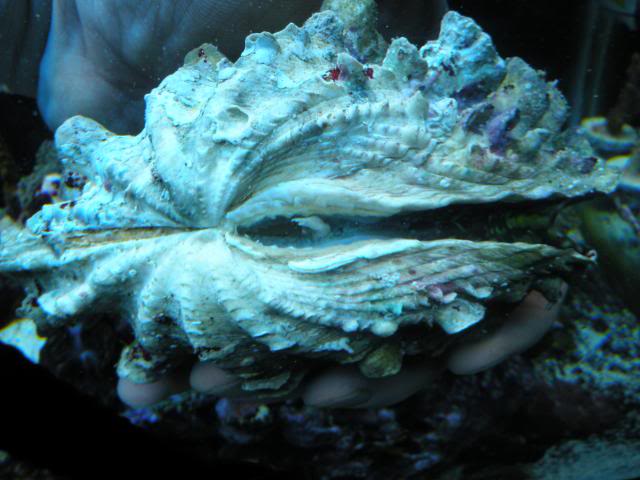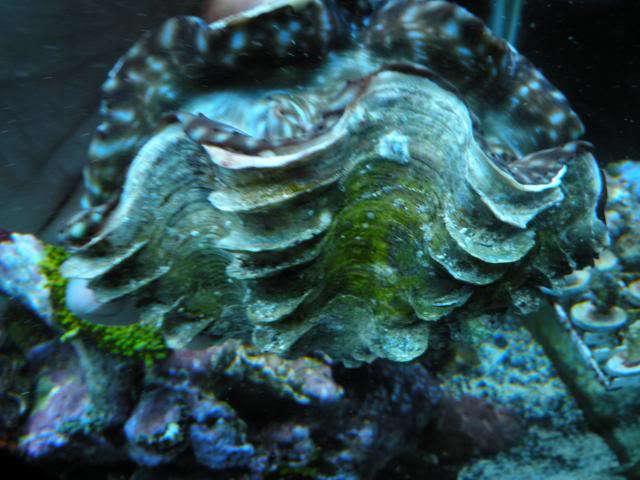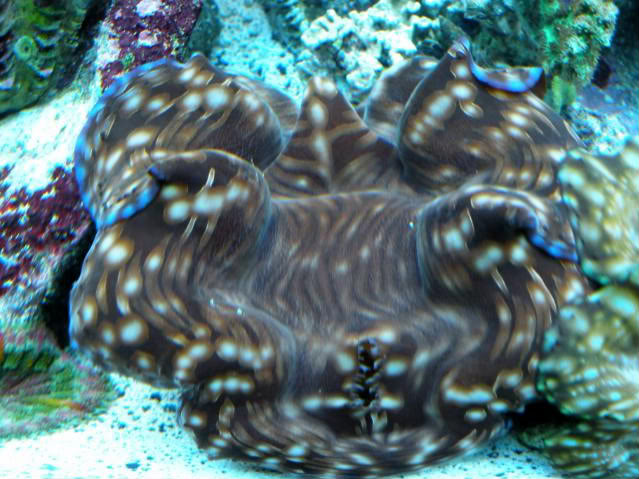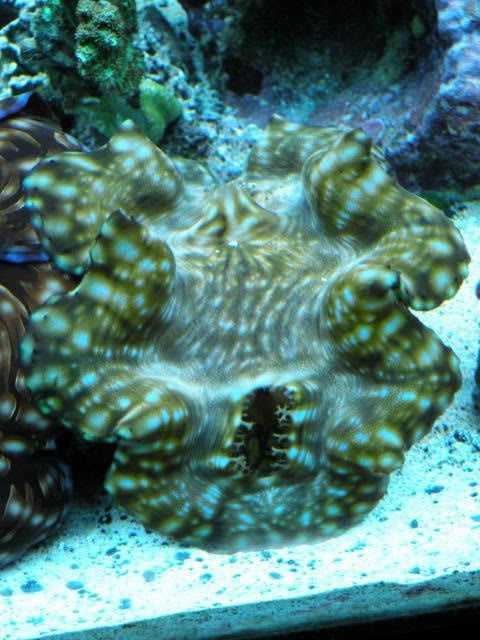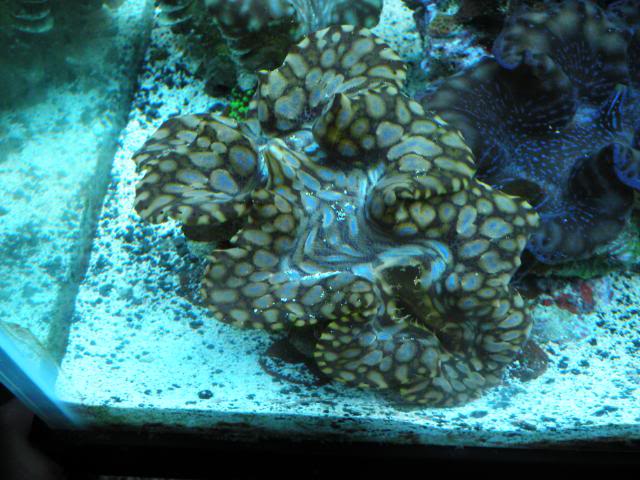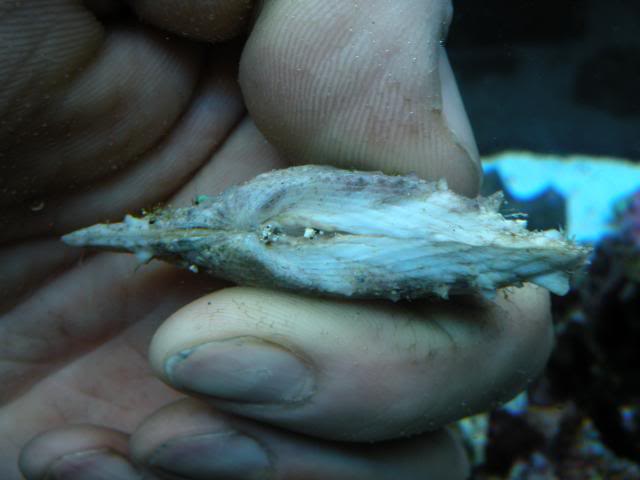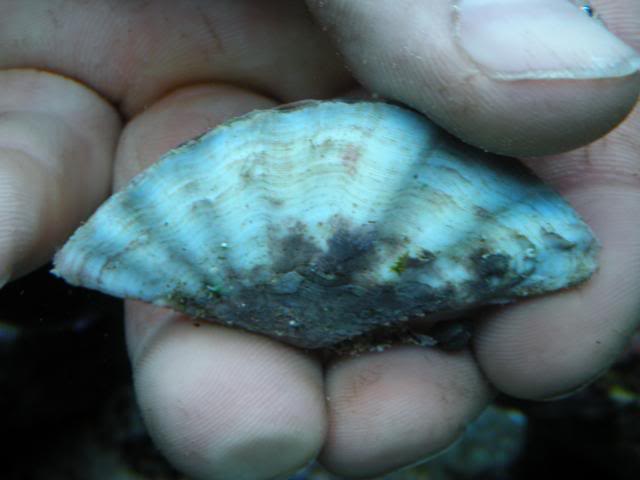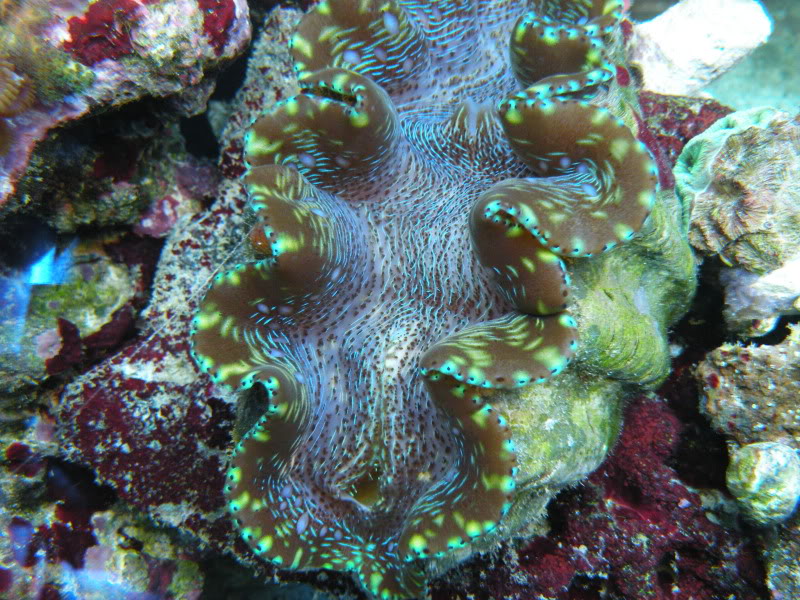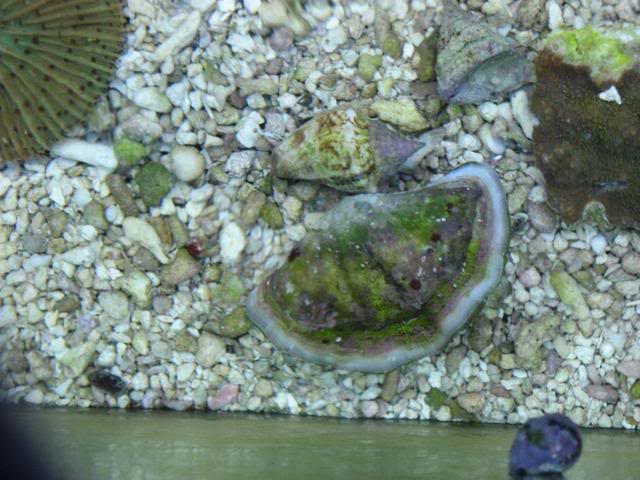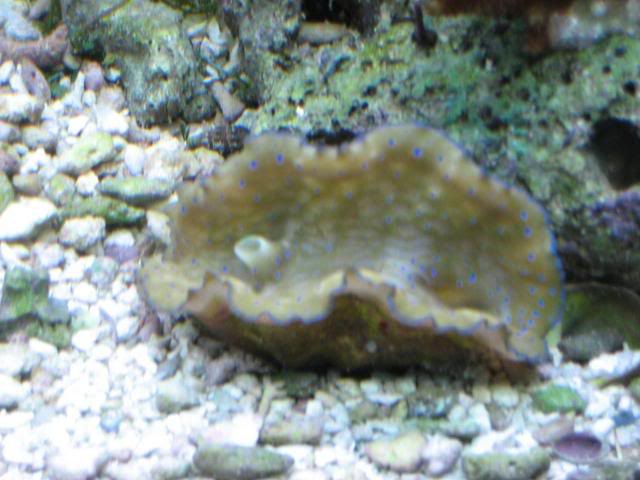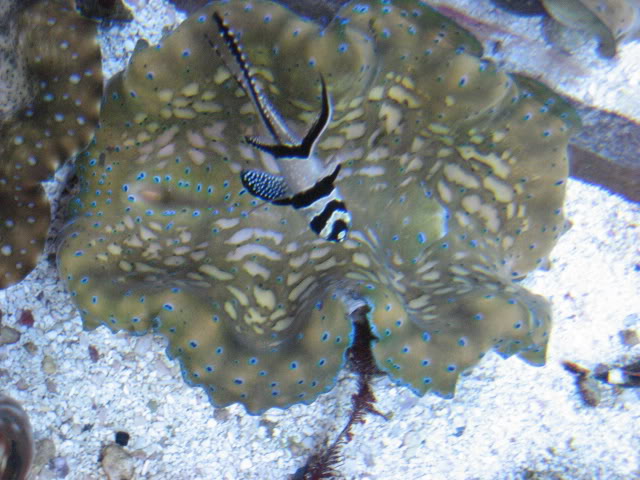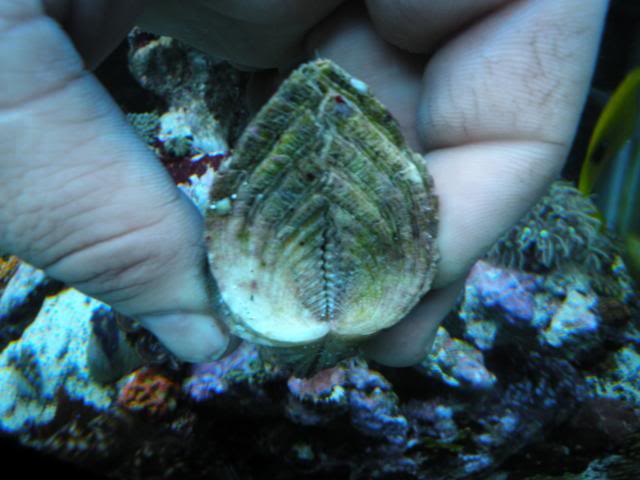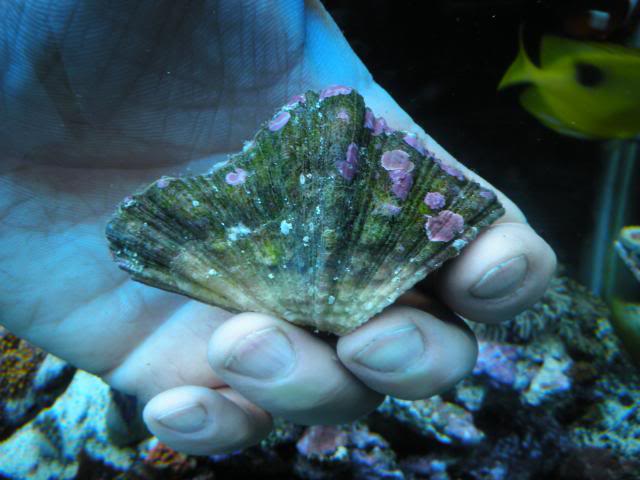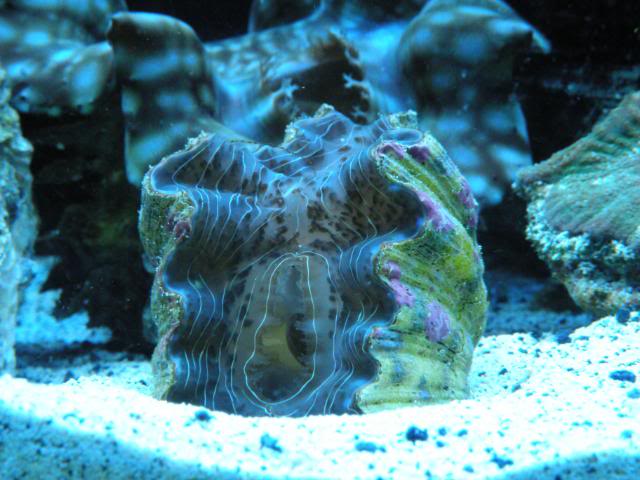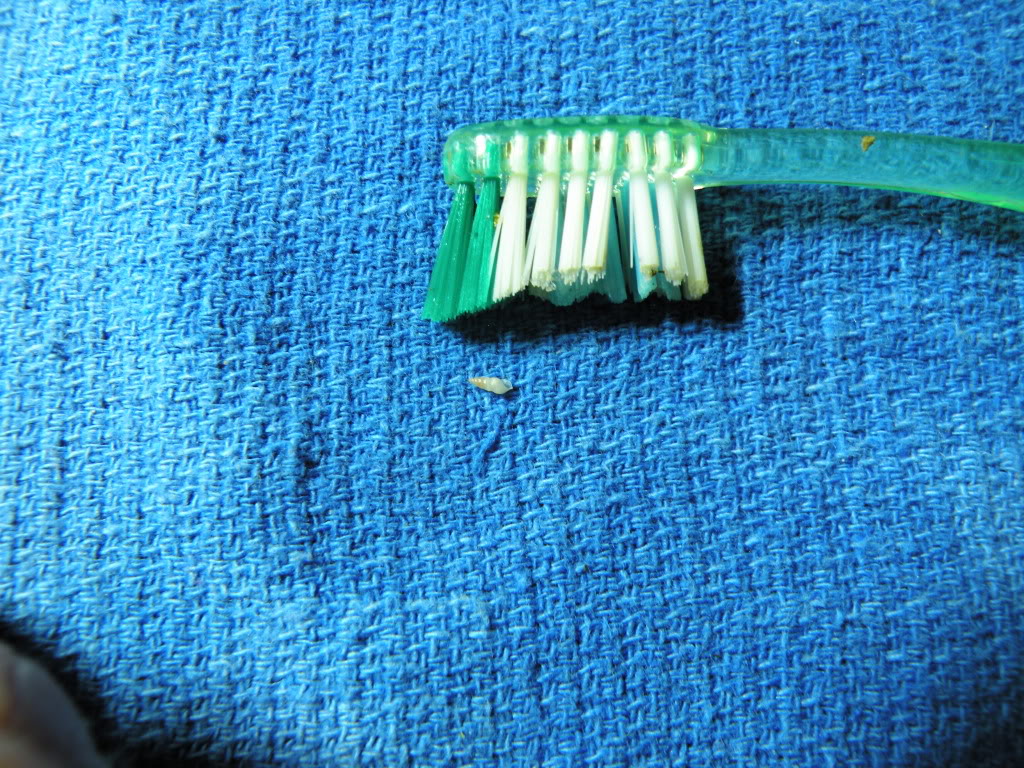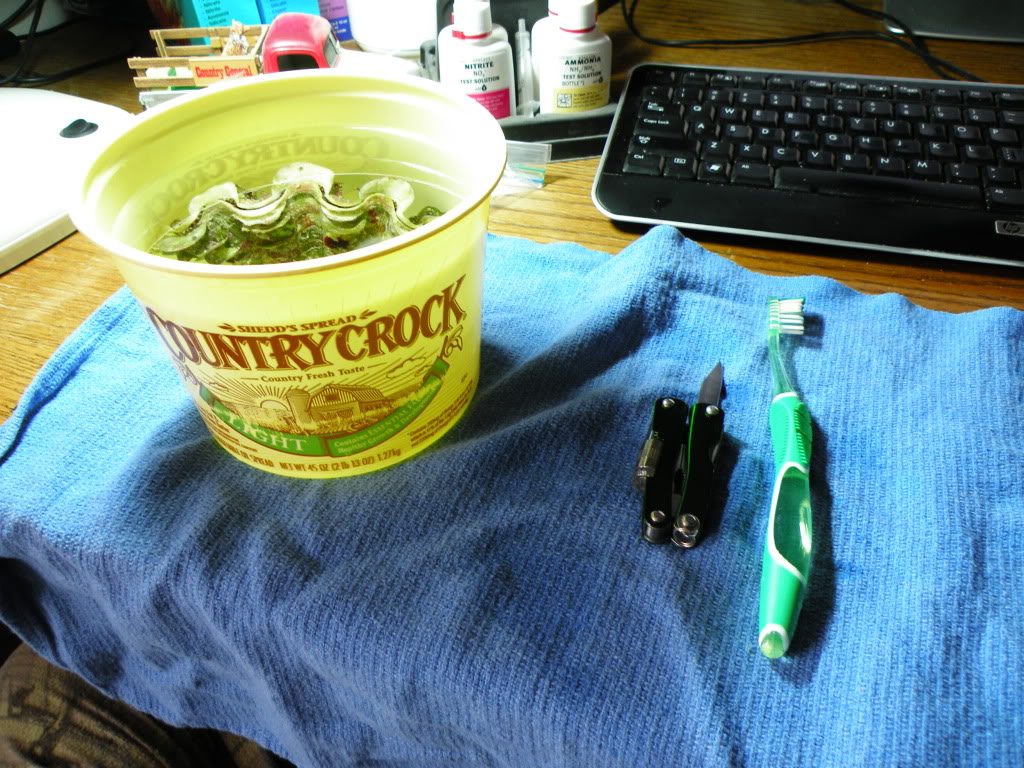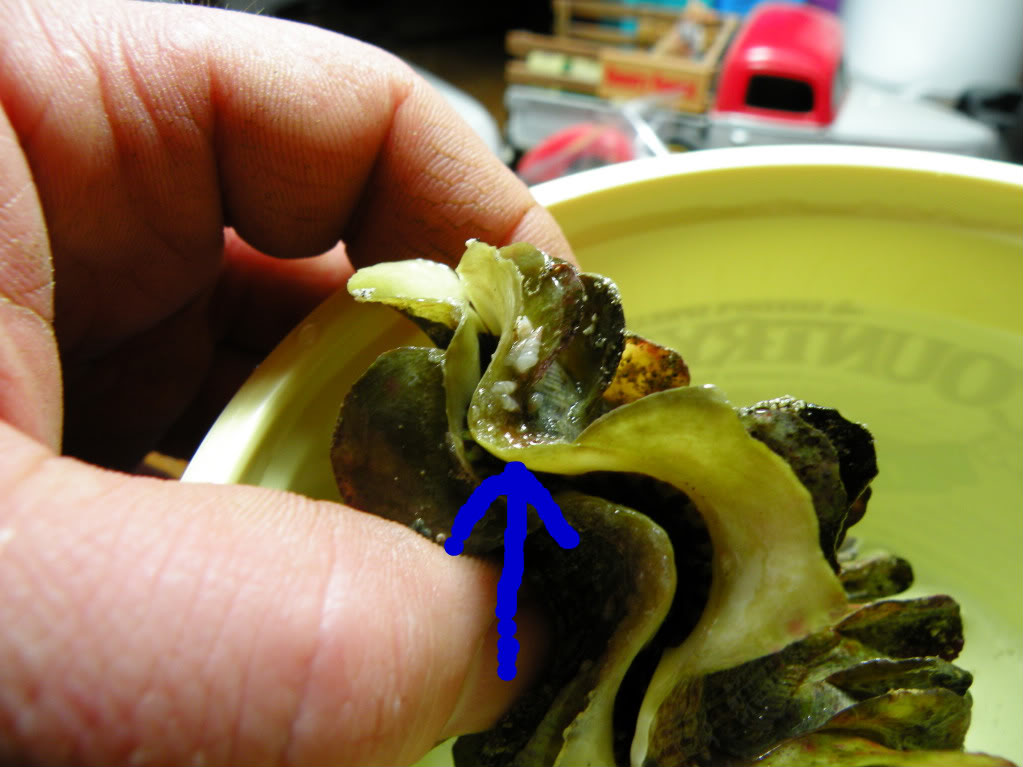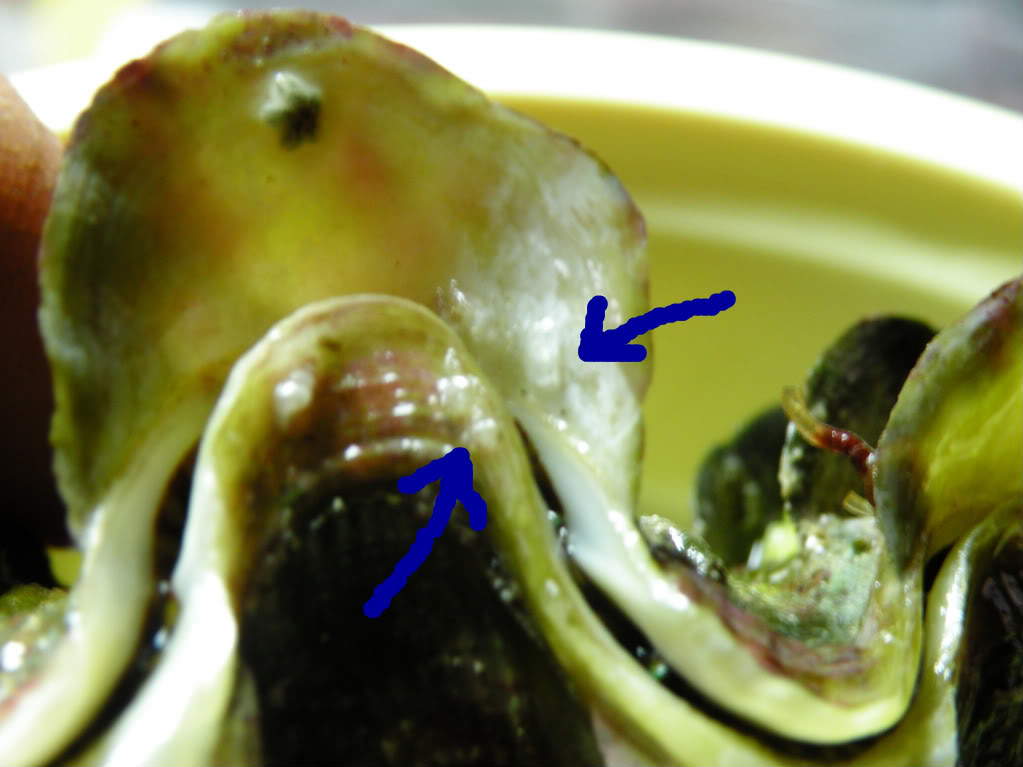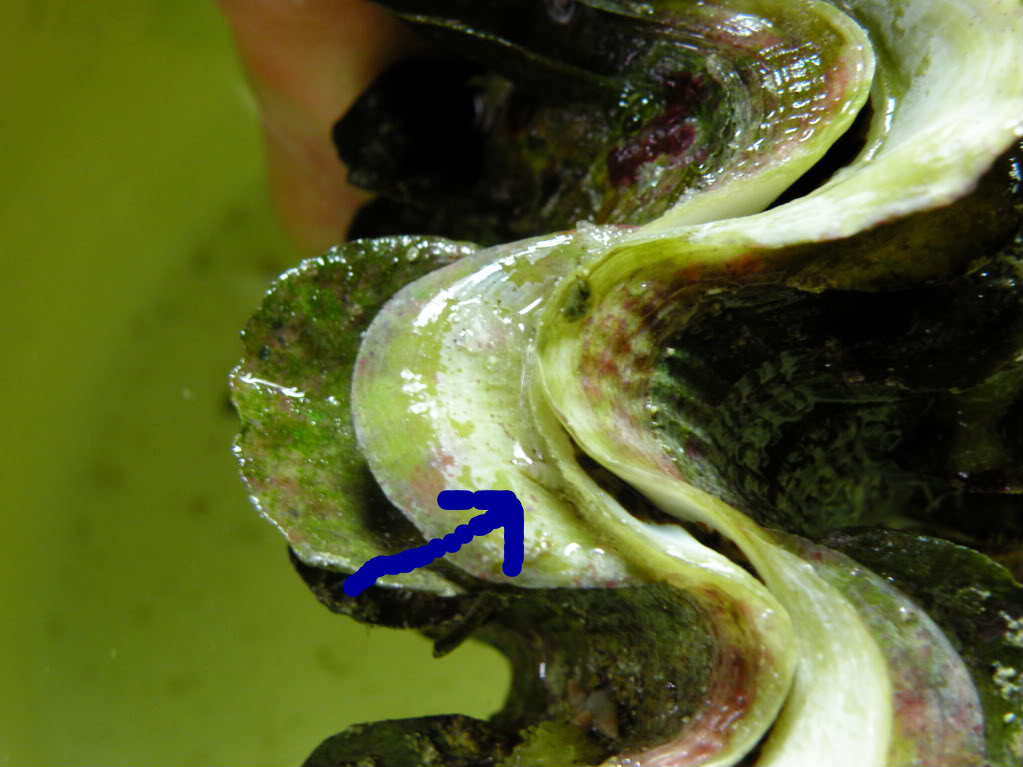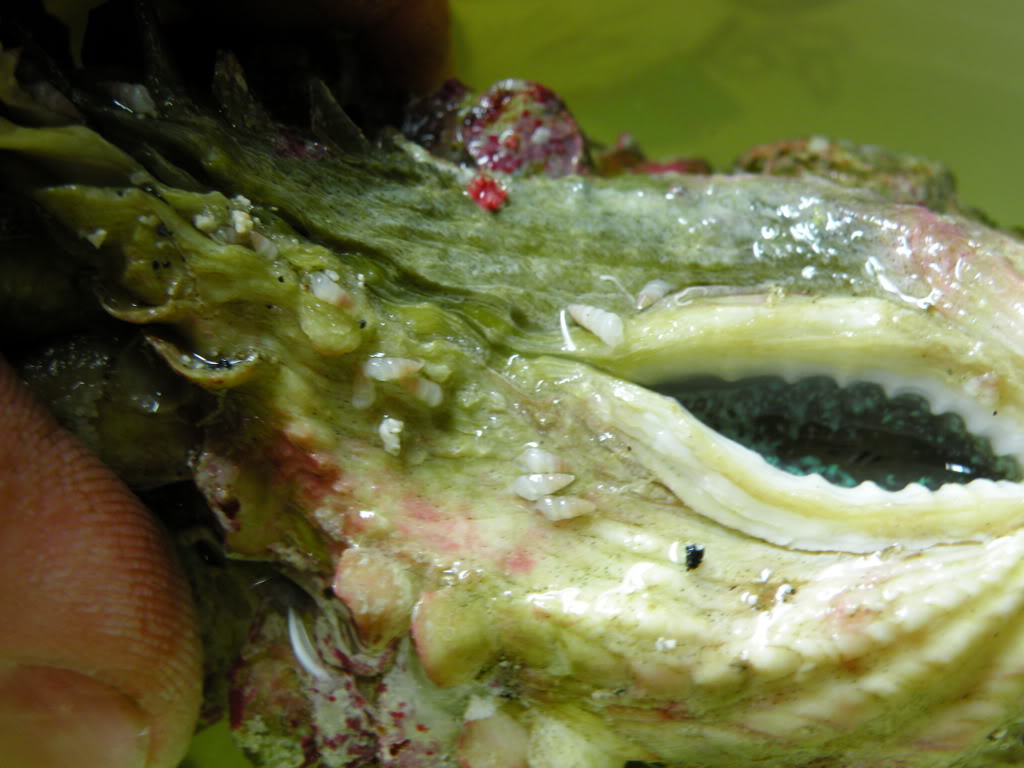Giant clam Identification.
Clam ID can be quite confusing at times and I myself occasionally see one that gets me wondering. The best way to ID giant clams is to look at the shells. Most importantly the bottom of the shell and the byssal opening.
For instance lets look at the T. crocea, it has the largest opening of any of the giant clams and it is also the smallest clam so it is easy to tell. The opening usually resembles a large teardrop. They are the smallest of the giant clams so the teardrop byssal opening is really pronounced.
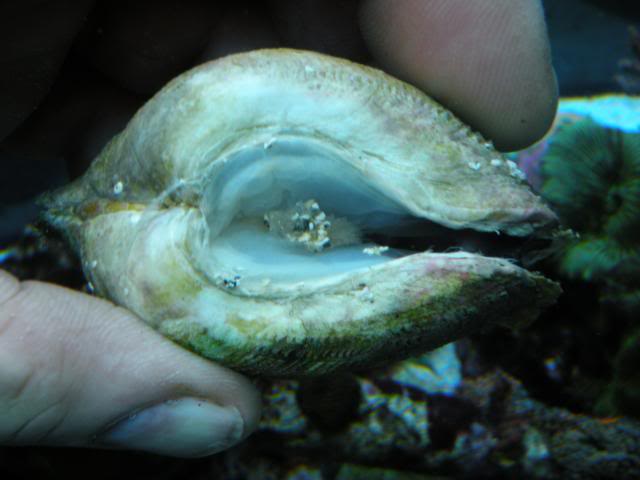
The sides of the T. crocea's shell is more symmetrical (short front to back, high bottom to top). The T.crocea shell can close completely and is relatively smooth, sometimes with scutes at the top edge of the shell. Max size about 6 inches. I have seen T. crocea with scutes all the way up the shell, this is more common in farmed T. crocea and some vendors may have tried to pass them off as T. maxea because of the scutes. They top out at a max size of about 6 inches.
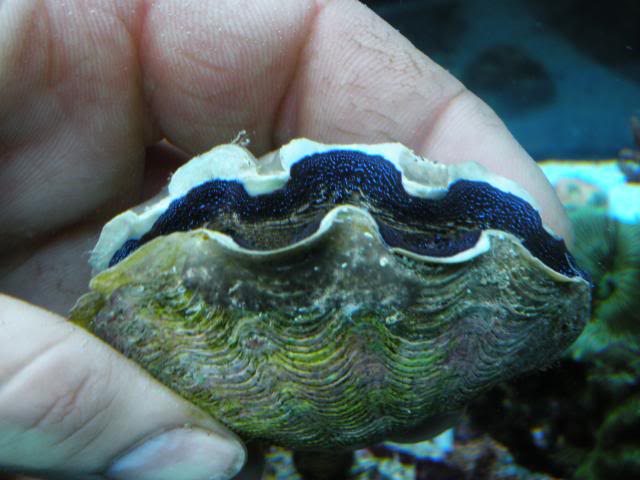
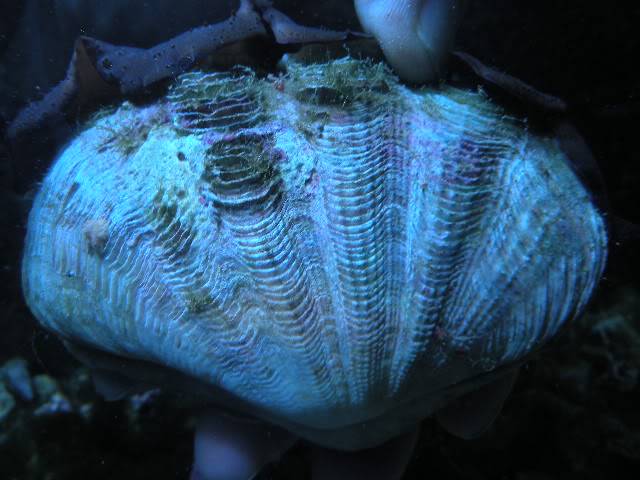
T.crocea with scutes all the way up the shell.
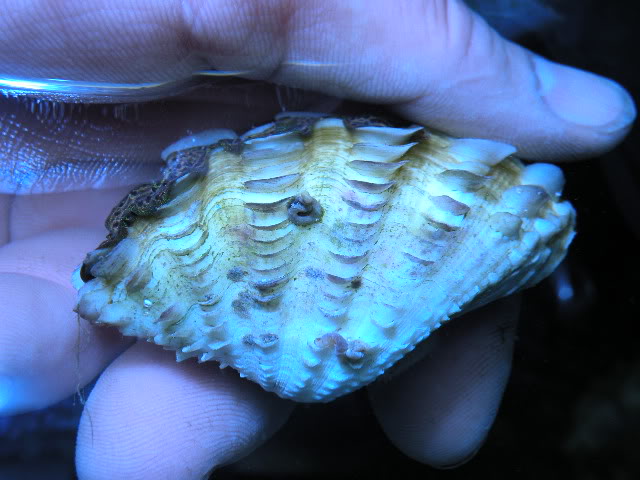
For me it is pretty easy to tell a T. crocea by looking at the mantle, most of them are fairly close in resemblance to this one. Seems we get a lot of blue T. crocea imported to us.
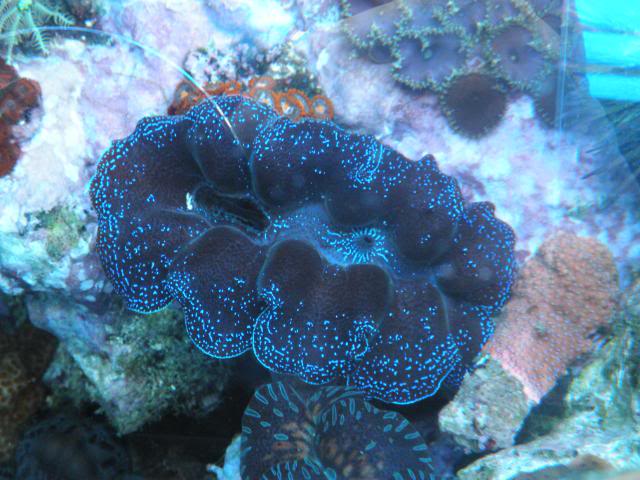
Next we have the T. maxima, they are the second smallest of the giant clams.
They have a large byssal opening, but narrower and smaller than T. crocea in comparison to the over all size of the shell.
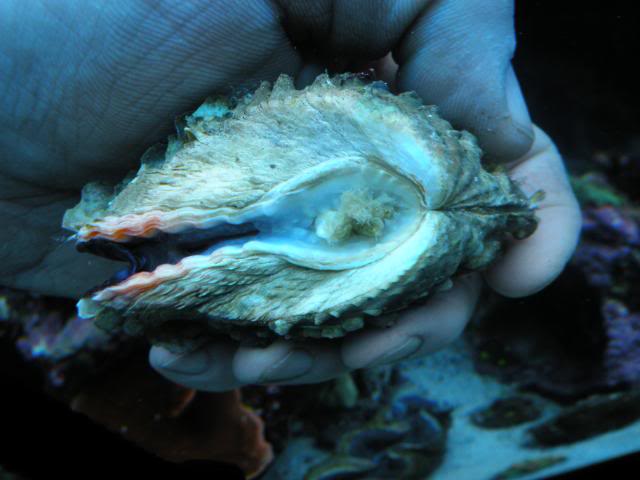
Also the shell is more elongated from front to back and is shorter top to bottom, with pronounced scutes in tight rows all the way down to the base of the shell. They top out at a max size of about 18 inches.
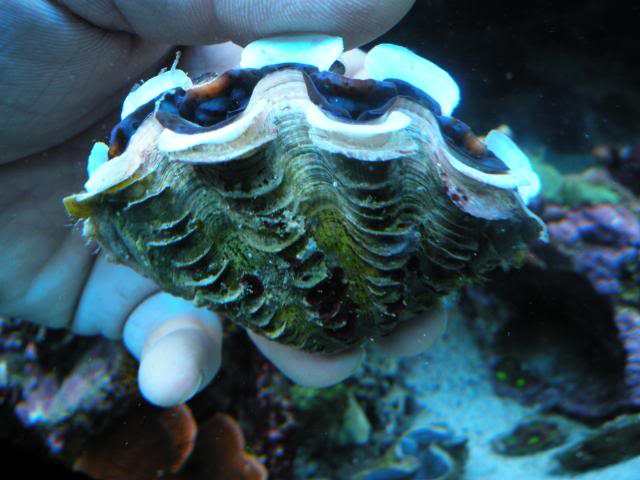
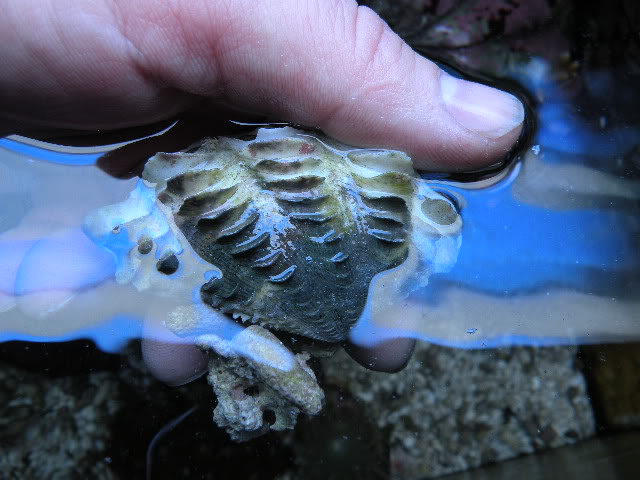
With the T. maxima's mantle being one of the most colorful to ID just from viewing them top down. They often have quite crazy patterns and this makes it hard.
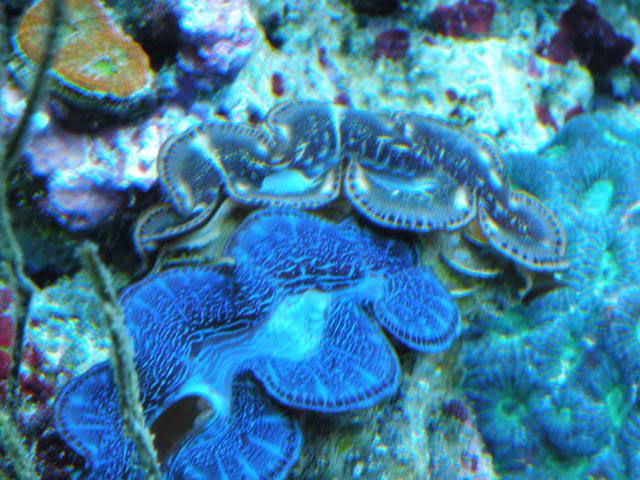
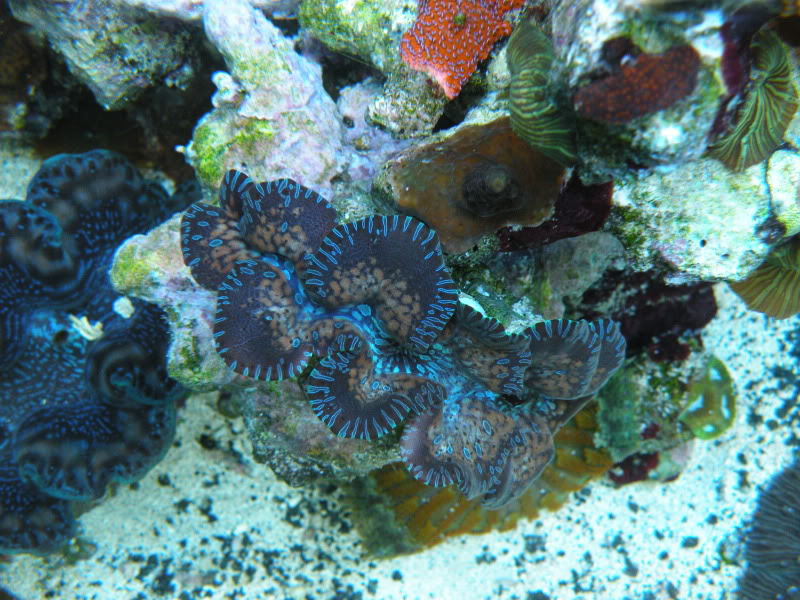
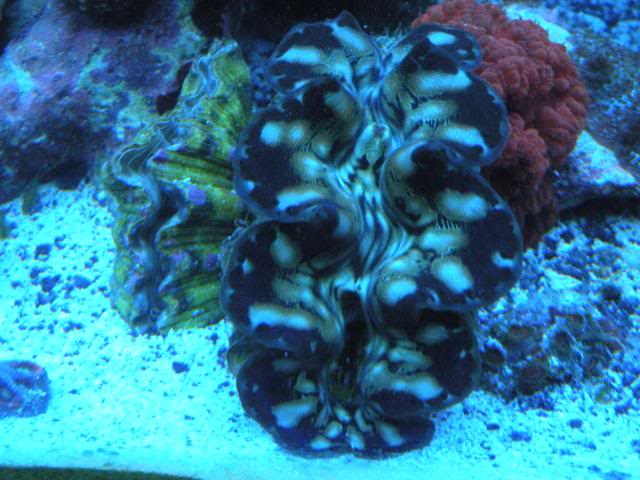
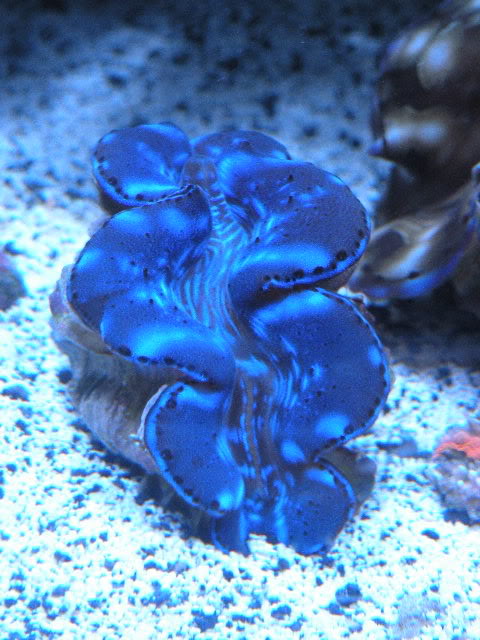
Last edited:




